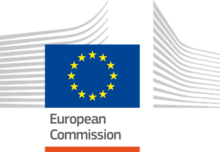This article needs additional citations for verification .(June 2018) |
 | |
| Successor | Innovation and Networks Executive Agency |
|---|---|
| Formation | 26 October 2006 (ratified) |
| Dissolved | 31 December 2013 |
| Location | |
Director | Dirk Beckers |
The Trans-European Transport Network Executive Agency (TEN-T EA) was an executive agency established by the European Commission in October 2006 in order to realise the technical and financial implementation of the TEN-T programme. It ceased its activities on 31 December 2013 and was superseded by the Innovation and Networks Executive Agency (INEA). [1]
The Agency was in charge of all open TEN-T projects under the 2000-2006 and 2007-2013 funding schemes. The projects represent all transport modes – air, rail, road, and maritime/sea – plus logistics and intelligent transport systems, and involve all EU Member States.
Its status as an executive agency meant that, although independent, the TEN-T EA was closely linked with its parent, the Directorate-General for Mobility and Transport (DG MOVE). DG MOVE dealt with all policy-making issues related to the TEN-T programme, while the Agency existed to execute the programme's specific tasks with a limited duration (31 December 2015).